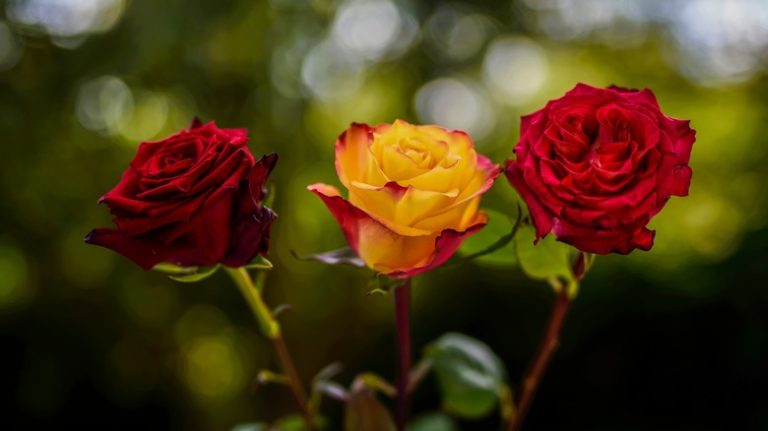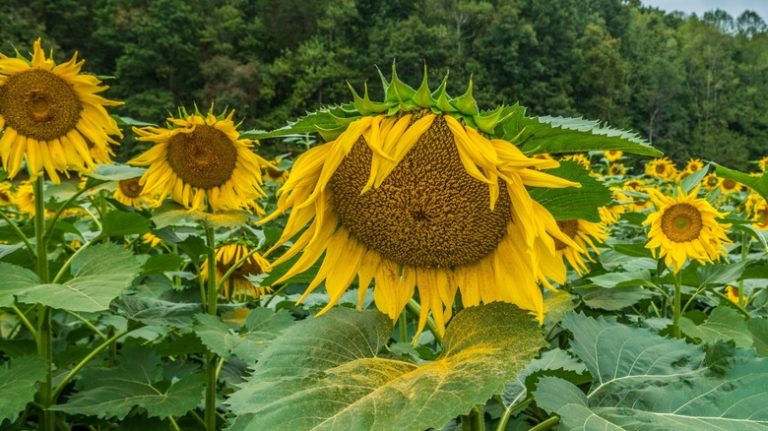Amsonia plants, also known as “bluestar,” are herbaceous perennials that are native to North America. These plants are known for their stunning blue flowers that resemble little pancakes, which can add a pop of color to any garden. Amsonia plants are not only beautiful, but they are also low-maintenance and attract bees and hummingbirds, making them a popular choice for many gardeners.
One of the great things about growing amsonia plants is that they can thrive in a wide range of conditions. They prefer full sunlight, but they can also tolerate partial shade. Amsonia plants are also quite adaptable when it comes to soil types, as long as the soil is well-drained. These plants can even tolerate drought conditions once established, making them a great choice for gardeners in drier climates.
When it comes to planting amsonia plants, it’s best to do so in the early spring or fall. Before planting, it’s a good idea to prepare the soil by adding organic matter, such as compost, to improve drainage and fertility. Once planted, be sure to water the plants regularly, especially during the first growing season, to help them establish a strong root system.
Amsonia plants are generally low-maintenance, requiring minimal pruning or deadheading. However, if you prefer a more formal shape or want to prevent self-seeding, you can trim the plants back after they have finished blooming. Mulching around the plants can also help retain moisture and suppress weeds. This will help keep the plants healthy and looking their best throughout the growing season.
In conclusion, growing amsonia plants can add a touch of beauty and impact to any garden. These tall, wispy plants with their delicate blue flowers and textured leaves can serve as a stunning backdrop for other perennials in your garden. With their low-maintenance nature and their ability to attract bees and hummingbirds, amsonia plants are a favorite among gardeners across North America. So, if you’re looking to add some color and life to your garden, amsonia plants are worth considering.
Amsonia tabernaemontana
Amsonia tabernaemontana, also known as eastern bluestar, is a native perennial plant that is easy to grow and care for in gardens. It is occasionally referred to as “blue dogbane” or “willow amsonia”.
This plant has bright green, narrow leaves that are slender and willow-like in shape. The leaves grow in a neat, thread-like fashion, giving the plant a delicate and feathery appearance. The star-shaped blue flowers of Amsonia tabernaemontana bloom in late spring or early summer and are followed by small seed pods. These pods contain seeds that can be used to propagate new plants.
Amsonia tabernaemontana is a low-maintenance plant that is highly valued for its beauty and versatility in the garden. It can be used as a backdrop for other flowering perennials or as a focal point in a garden bed. It is especially attractive when planted in mass or in drifts, creating a sea of blue flowers.
This plant thrives in full sunlight but can tolerate partial shade. It is adaptable to a variety of soil types, including sandy or clay soils. However, it prefers moist, well-drained soil and may not tolerate wet or waterlogged conditions. Adding organic matter such as compost or mulch to the soil can help improve drainage and fertility.
Amsonia tabernaemontana is native to the eastern United States, from Georgia to Wisconsin. It is highly valued for its long-lasting blue flowers, which are a favorite of bees and butterflies. It is also deer-resistant, making it a good choice for gardens with deer problems.
To care for Amsonia tabernaemontana, prune the plants in late winter or early spring to remove any dead or damaged stems. This will help maintain a tidy appearance and encourage new growth. The plants can be divided every few years, in early spring or fall, to create more plants or to rejuvenate older clumps.
In conclusion, Amsonia tabernaemontana is a beautiful and easy-to-grow perennial plant that adds a touch of blue to the garden. Its slender, willow-like leaves and star-shaped blue flowers make it a prized addition to any garden. Whether used as a border plant or in mass plantings, this versatile plant is sure to impress.
Amsonia Plant Care Tips For Growing Amsonia Plants
Amsonia plants are a beautiful addition to any garden or landscape. With their tall, slender stems and star-shaped blue flowers, they can have a striking impact in both informal and formal gardens. The textured foliage of the Amsonia adds interest and value to the overall design.
Amsonia plants are native to North America and are members of the Apocynaceae family. There are several varieties of Amsonia, including the Amsonia tabernaemontana, Amsonia hubrichtii, and Amsonia ciliata. The most common variety is the Amsonia tabernaemontana, also known as ‘Blue Star’.
When growing Amsonia plants, it’s important to choose a location that receives full sun to partial shade. They can tolerate a variety of soil types, but prefer well-drained soils. Amsonia plants are drought tolerant once established, making them suitable for areas with drier climates.
Amsonia plants can be propagated by seeds or division. If planting seeds, sow them in a well-drained seed starting mix and keep the soil consistently moist until the seeds germinate. When dividing Amsonia plants, do so in the spring or early fall, after the flowering period. This will give the divided plants enough time to establish themselves before the next growing season.
Amsonia plants have a natural, clumping habit and can spread through underground rhizomes. To prevent overcrowding and maintain the health of the plants, division every 3-4 years is recommended.
Amsonia plants are known for their attractive blue flowers, which bloom in late spring to early summer. The flowers attract bees and hummingbirds, making them a valuable addition to gardens that support pollinators. The blue flowers also provide a bright pop of color in the garden.
The thread-leaf variety of Amsonia, known as Amsonia hubrichtii or ‘Arkansas Amsonia’, is especially prized for its fine, thread-like foliage and vibrant yellow fall color. This variety is deer-resistant and is often used in natural landscaping or prairie-style gardens.
For the best flowering and overall health of the Amsonia plants, it’s important to provide regular water during periods of drought. Mulching around the plants can help conserve moisture and regulate soil temperature. Fertilizer is generally not necessary, as Amsonia plants are adapted to thrive in low-nutrient soils.
If you have any questions about growing Amsonia plants or need more information, don’t hesitate to ask a local horticulture expert or consult the latest gardening articles from reputable sources, such as the University of Wisconsin-Madison’s horticulture department or gardening hub websites.
Amsonia Flower Information
Amsonia flowers are grown as perennial plants and are commonly known as Blue Star. These plants are valued for their bright blue flowers that resemble small stars. Amsonia plants are native to North America, with the Amsonia tabernaemontana variety being the most common.
Amsonia flowers are best grown in full sunlight, although they can tolerate some shade. They are adaptable to a wide range of soil conditions, including clay and sandy soils. These plants are fairly low-maintenance and deer-resistant, making them a popular choice for gardeners.
Amsonia plants typically grow to a height of 2 to 4 feet, with a spread of about 2 to 3 feet. They have long, narrow leaves that provide a beautiful backdrop for the star-shaped flowers. The foliage of Amsonia plants turns a bright yellow in the fall, adding to their visual appeal.
When growing Amsonia plants, it is important to provide them with well-draining soil. Adding a layer of mulch around the plants can help retain moisture and control weeds. It is also important to water Amsonia plants regularly, especially during dry periods.
Amsonia flowers are known for their attractiveness to pollinators, including bees and hummingbirds. Their bright blue flowers and yellow foliage make a striking impact in any garden. The flowers can also be used in floral arrangements or dried for decorative purposes.
The Amsonia family includes several other varieties, such as Amsonia ‘Storm Cloud’ and Amsonia ‘Blue Ice’. These varieties have similar care requirements and can be grown in the same conditions as the common Amsonia plant.
If you are considering growing Amsonia plants in your garden, there are many resources available for more information. The National Horticulture Research Center and the University of Wisconsin-Madison Extension have articles and tips on how to successfully grow and care for Amsonia plants. Gardening forums and plant nurseries are also great places to ask questions and seek advice from experienced gardeners.
Overall, Amsonia flowers are a valuable addition to any garden. Their beautiful blue flowers, hardy nature, and low maintenance requirements make them a popular choice among gardeners. Whether grown for their visual appeal or their value to pollinators, Amsonia plants are sure to bring beauty to any landscape.
Amsonia Plant Care
The Amsonia plant, also known as the “blue star” plant, is a beautiful addition to any garden. These herbaceous plants are prized for their blue flowers and wispy foliage. Here are some tips on how to care for your Amsonia plants:
- Planting: Amsonia plants grow best in well-drained soil and prefer full sun to partial shade conditions. Choose a location in your garden that gets at least 6 hours of direct sunlight per day. Amsonia plants are hardy in USDA zones 3-9.
- Watering: Amsonia plants are fairly drought-tolerant once established. Water your plants regularly during the first growing season to help them establish a strong root system. After that, water them only during dry spells or when the soil feels dry to the touch.
- Fertilizing: Amsonia plants typically don’t require much fertilization. However, you can apply a balanced, slow-release fertilizer in early spring if you want to give your plants an extra boost.
- Pruning: Amsonia plants don’t require much pruning. However, you can trim back the foliage in late winter or early spring to remove any dead or damaged branches. This will help to maintain a neater shape and promote new growth.
- Mulching: Mulching around your Amsonia plants can help to conserve moisture, suppress weeds, and keep the soil temperature more consistent. Use an organic mulch, such as wood chips or compost, and apply a 2-3 inch layer around the plants.
- Pest and Disease Control: Amsonia plants are relatively pest and disease resistant. They are deer-resistant, making them a great choice for gardens in areas with deer populations. However, they can occasionally be susceptible to fungal diseases such as powdery mildew. If you notice any signs of disease, contact your local extension office for advice on how to control it.
- Propagation: Amsonia plants can be propagated by division or by collecting seeds. To propagate by division, dig up the plant in early spring or fall and separate the clumps into smaller sections. To collect seeds, wait until the seed pods turn brown and then collect the seeds. Sow the seeds in a flat and keep them in a cold frame or refrigerator for about 6 weeks. Then, plant the seeds in pots or directly in the ground.
Amsonia plants are a great addition to any garden. Their blue star-shaped flowers and ferny textured foliage make them a standout in the landscape. Whether planted as a specimen plant or as part of a mixed border, Amsonia plants are sure to bring beauty and interest to your garden.




